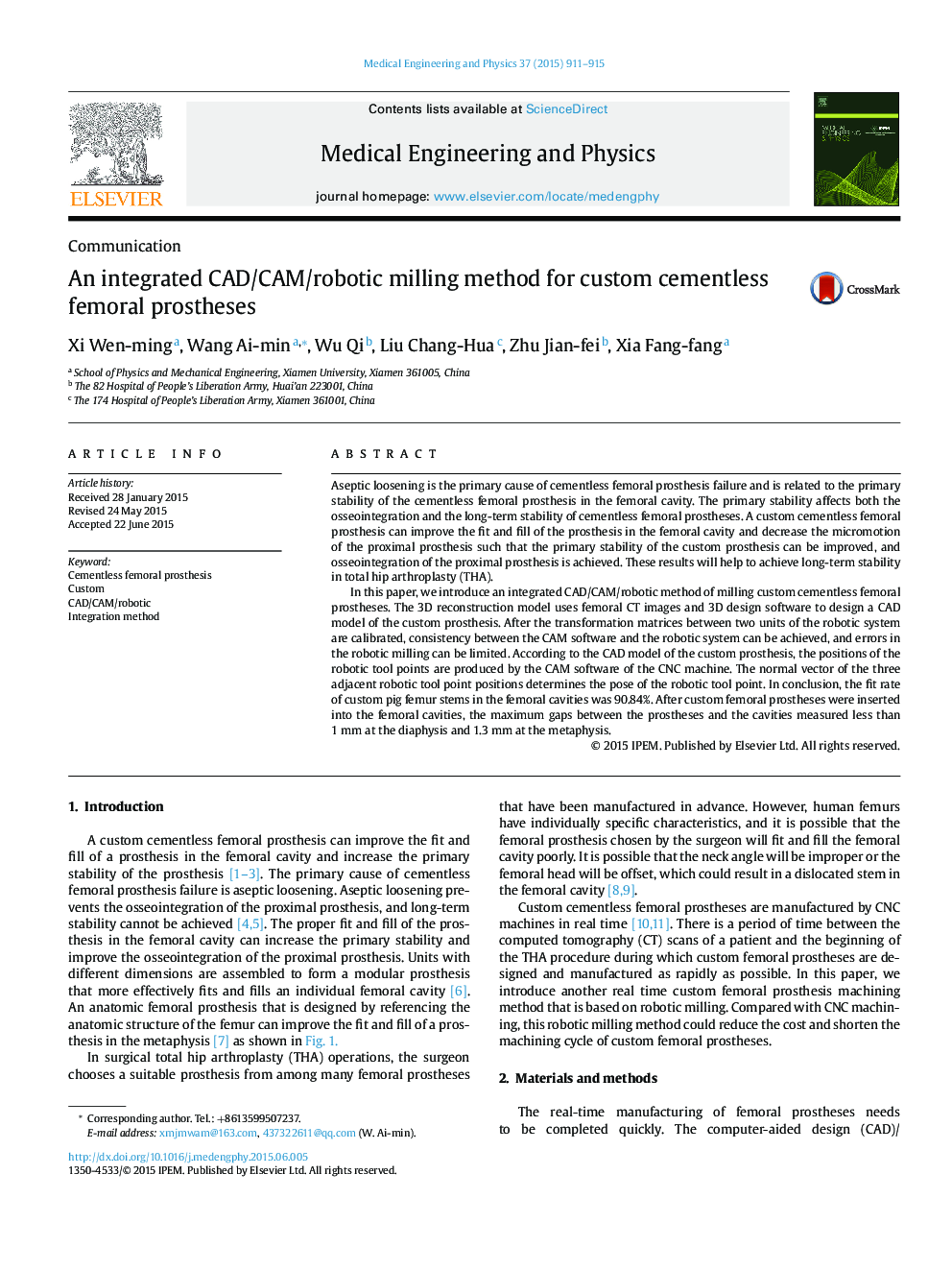| Article ID | Journal | Published Year | Pages | File Type |
|---|---|---|---|---|
| 875656 | Medical Engineering & Physics | 2015 | 5 Pages |
•We have shown the CAD/CAM/Robotics combined approach of milling custom-made uncemented femoral hip prosthesis.•Reconstruct 3D model of the femur according to the CT data, then mill the prosthesis to fit the femur.•The fabricated prosthesis is inserted into the medullary cavity of pig femur, the filling rate of the stem in medullary cavity is 90.84%.
Aseptic loosening is the primary cause of cementless femoral prosthesis failure and is related to the primary stability of the cementless femoral prosthesis in the femoral cavity. The primary stability affects both the osseointegration and the long-term stability of cementless femoral prostheses. A custom cementless femoral prosthesis can improve the fit and fill of the prosthesis in the femoral cavity and decrease the micromotion of the proximal prosthesis such that the primary stability of the custom prosthesis can be improved, and osseointegration of the proximal prosthesis is achieved. These results will help to achieve long-term stability in total hip arthroplasty (THA).In this paper, we introduce an integrated CAD/CAM/robotic method of milling custom cementless femoral prostheses. The 3D reconstruction model uses femoral CT images and 3D design software to design a CAD model of the custom prosthesis. After the transformation matrices between two units of the robotic system are calibrated, consistency between the CAM software and the robotic system can be achieved, and errors in the robotic milling can be limited. According to the CAD model of the custom prosthesis, the positions of the robotic tool points are produced by the CAM software of the CNC machine. The normal vector of the three adjacent robotic tool point positions determines the pose of the robotic tool point. In conclusion, the fit rate of custom pig femur stems in the femoral cavities was 90.84%. After custom femoral prostheses were inserted into the femoral cavities, the maximum gaps between the prostheses and the cavities measured less than 1 mm at the diaphysis and 1.3 mm at the metaphysis.
